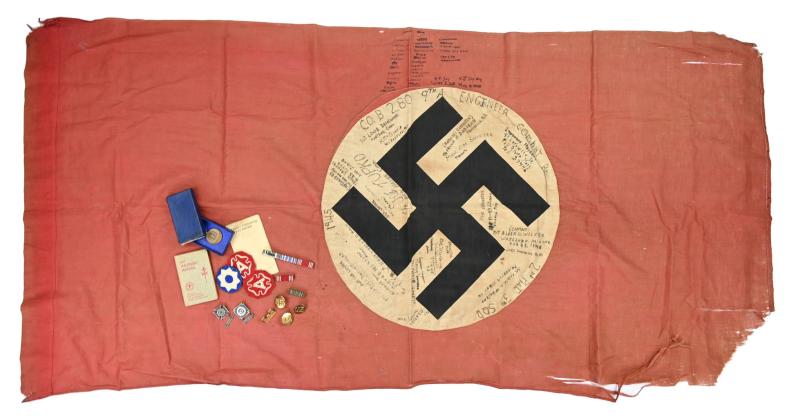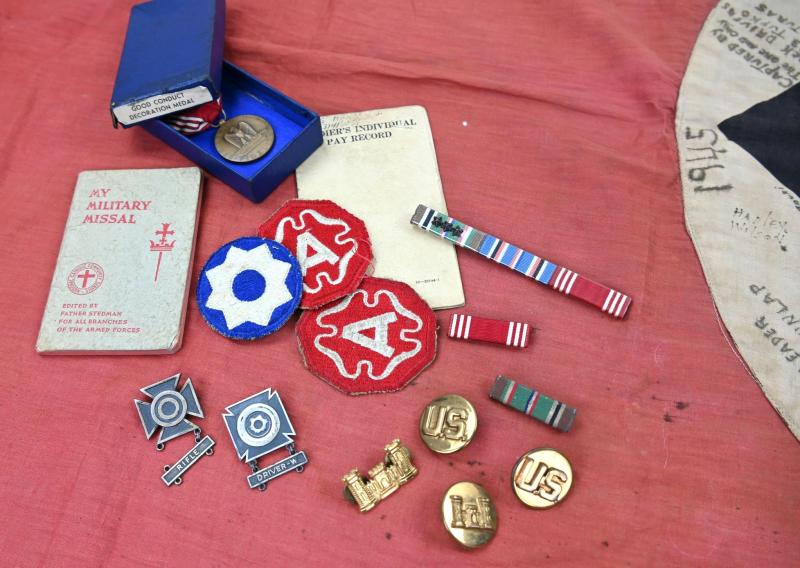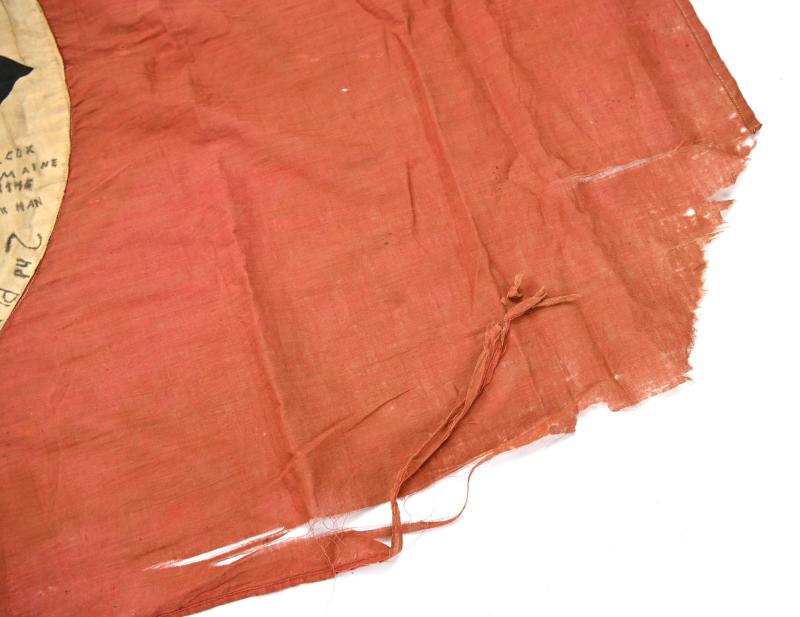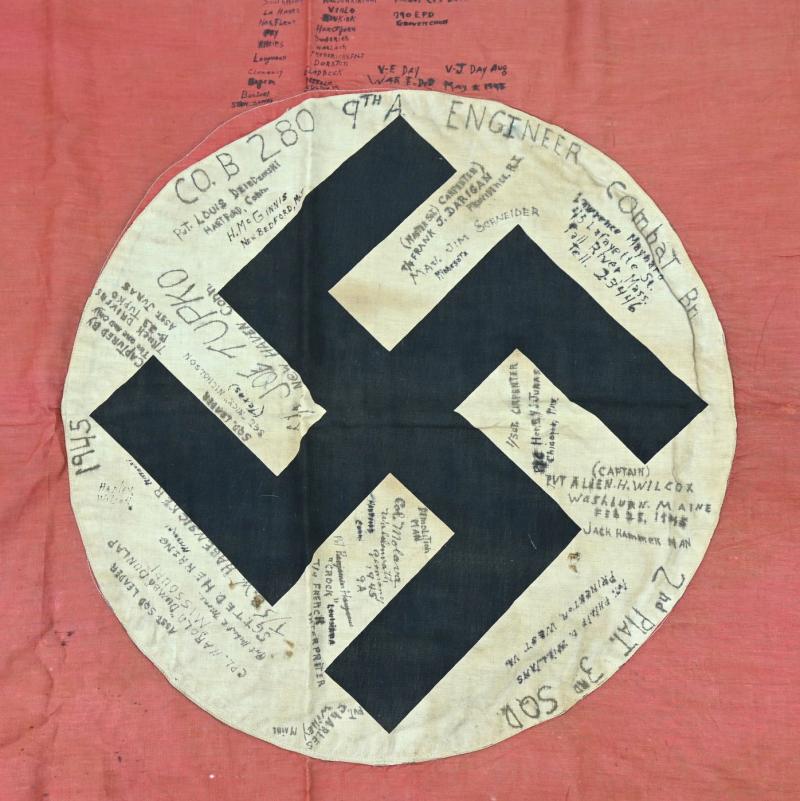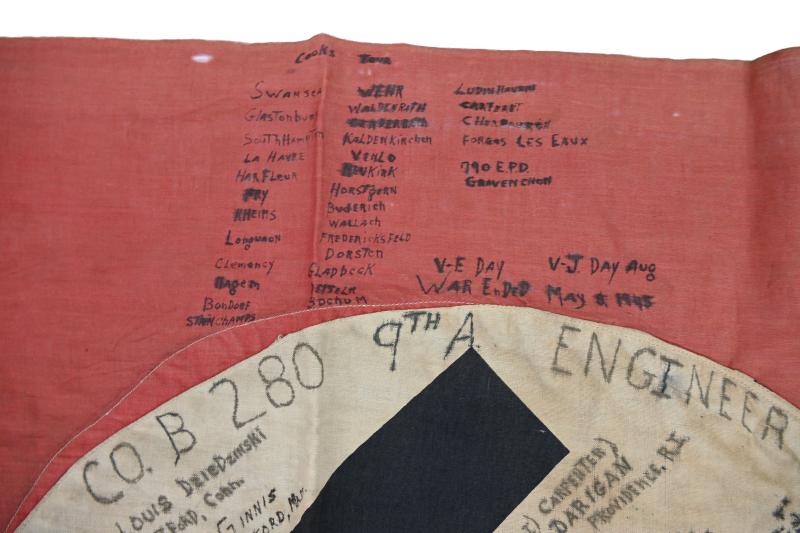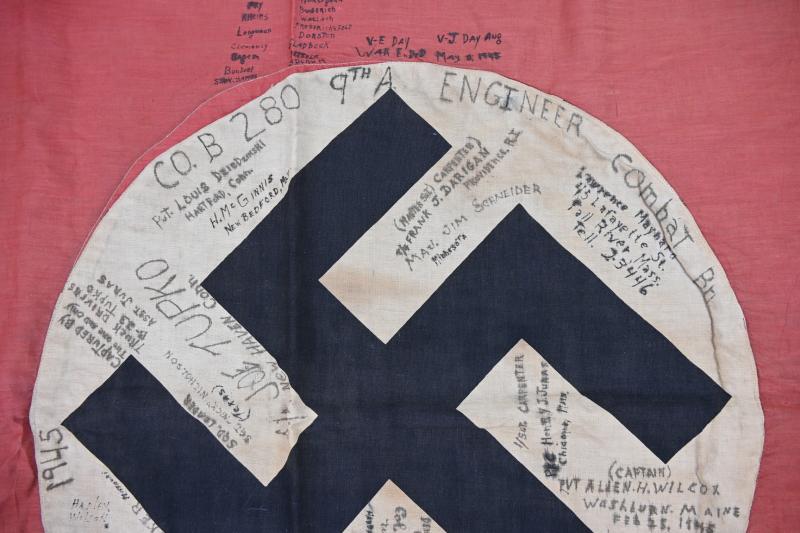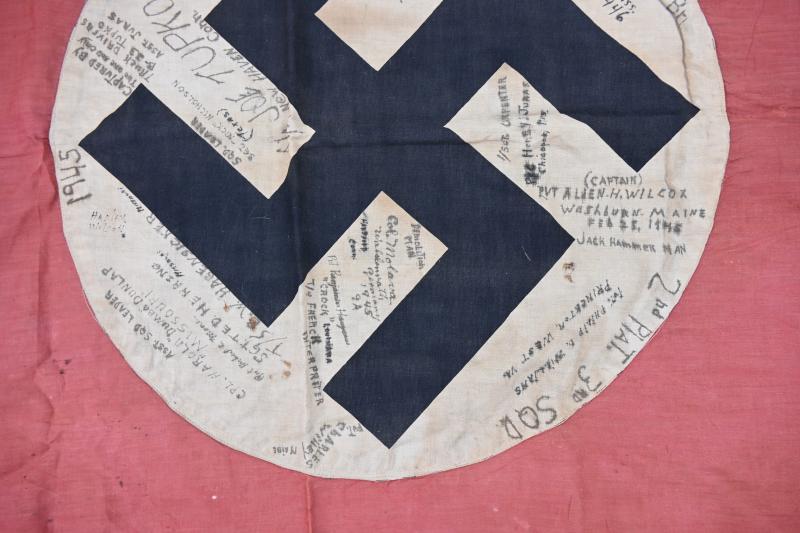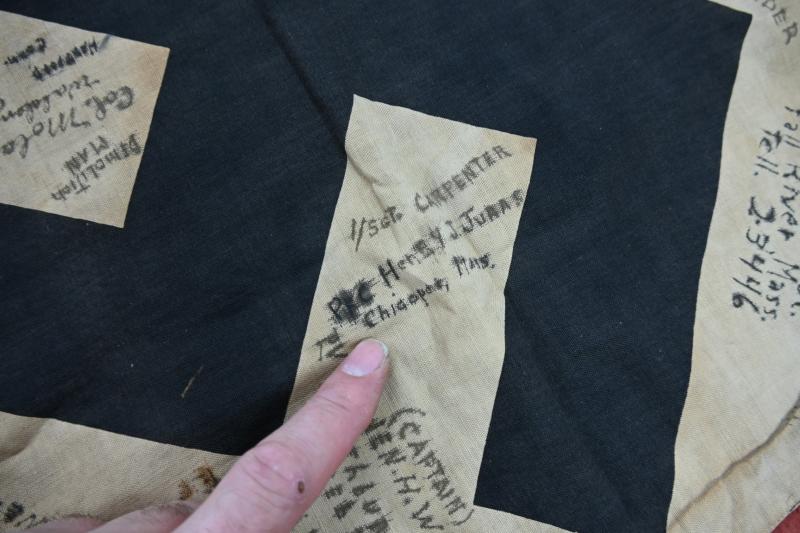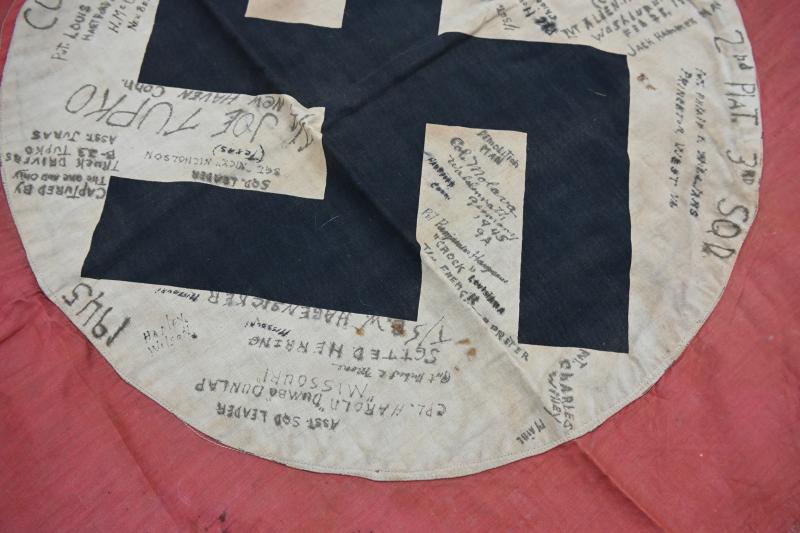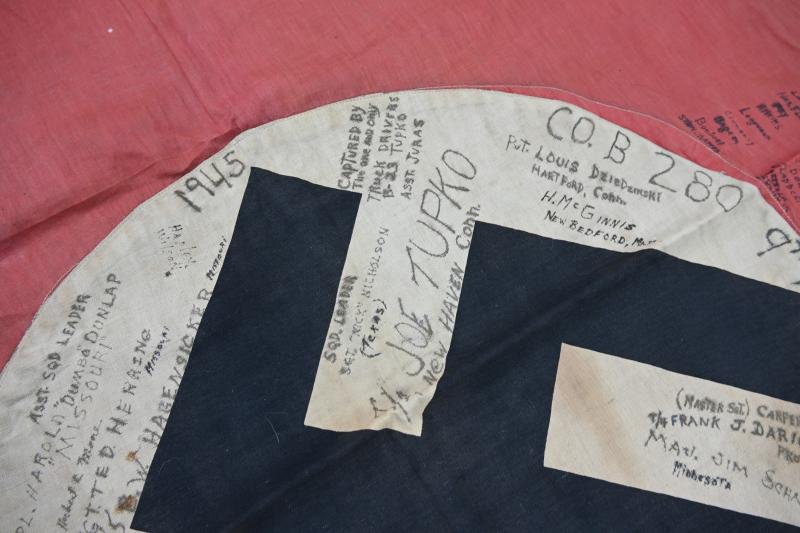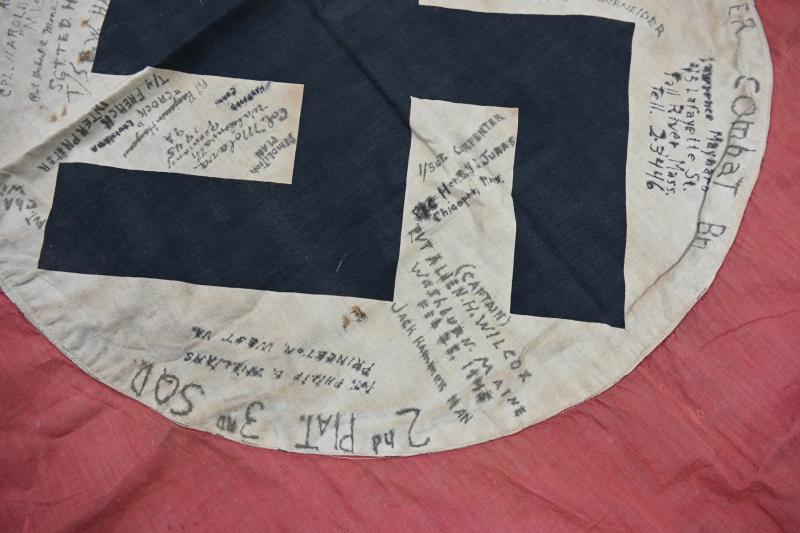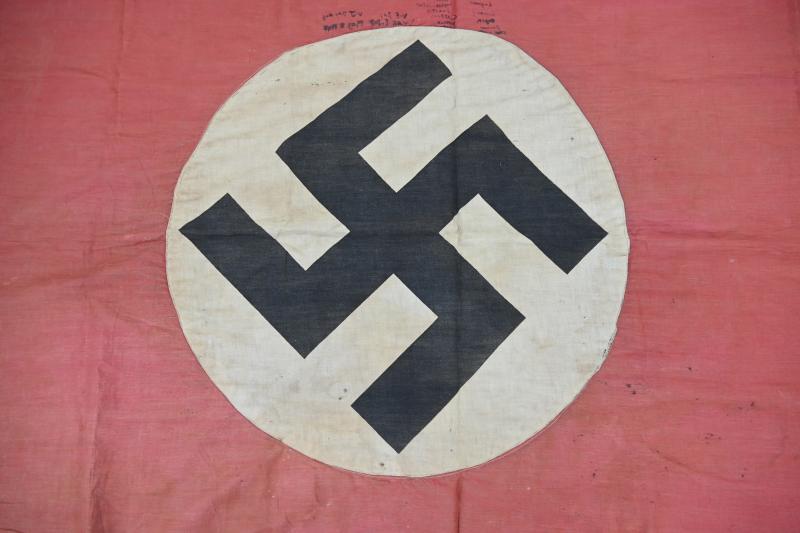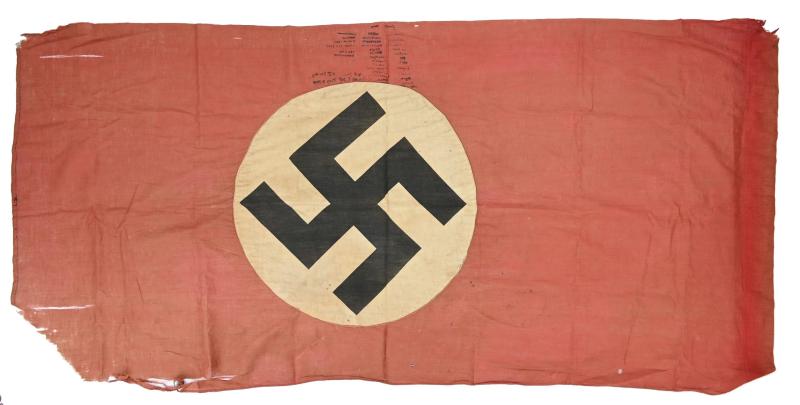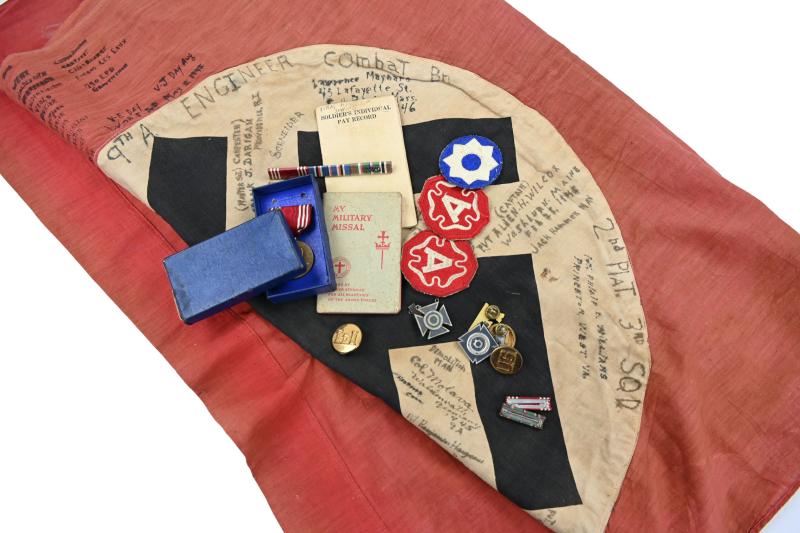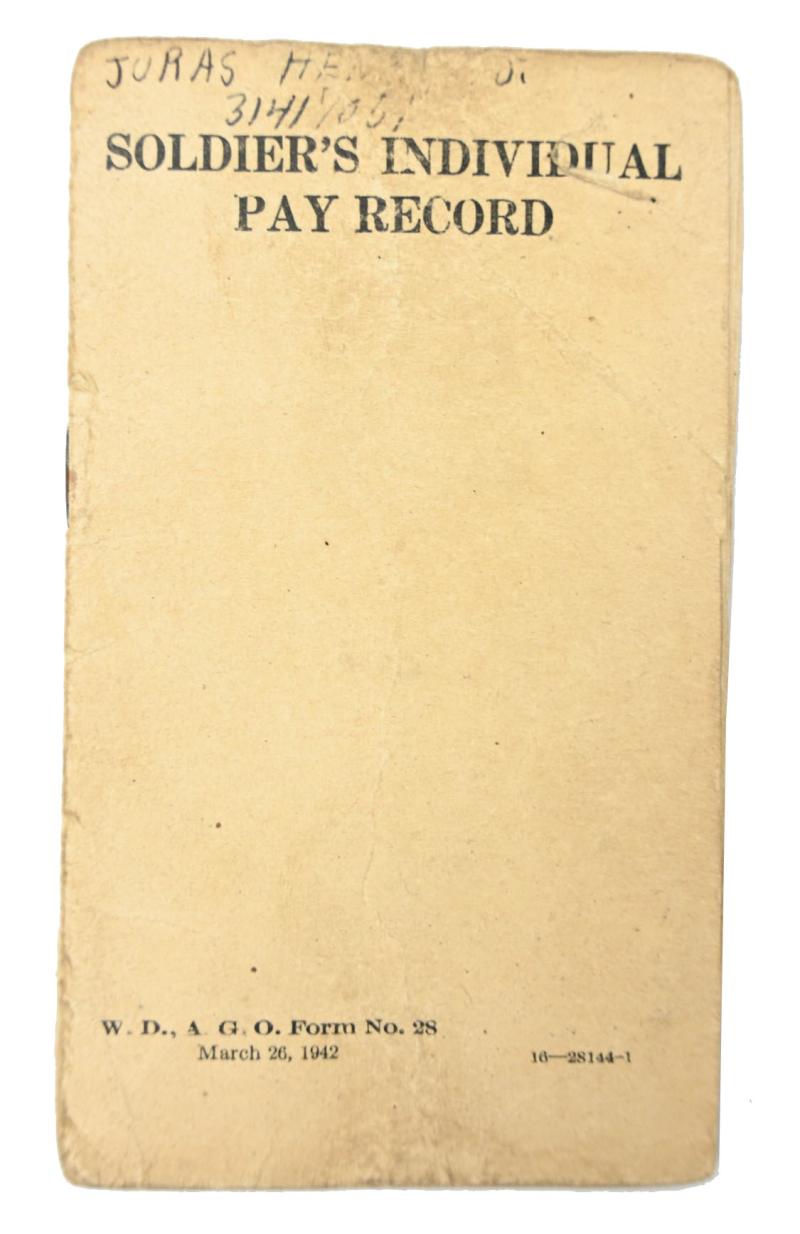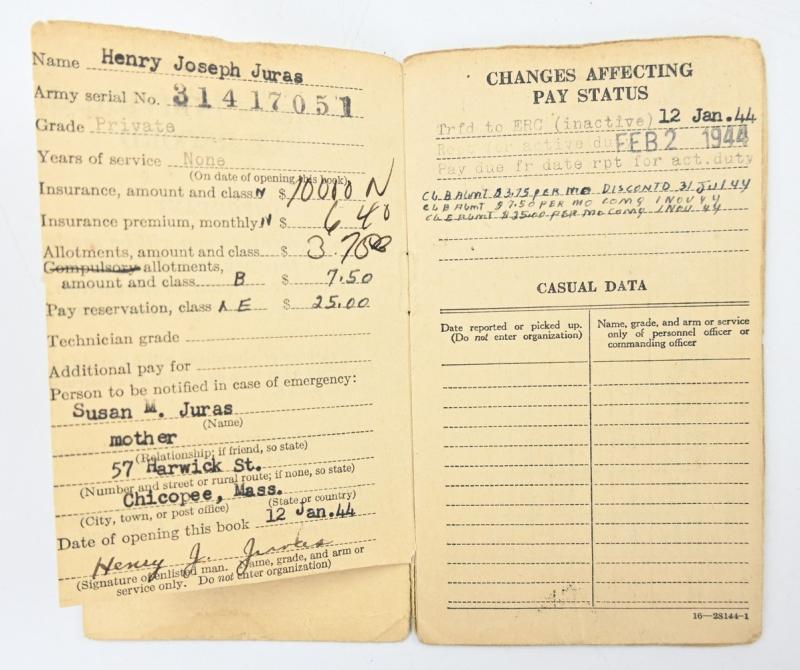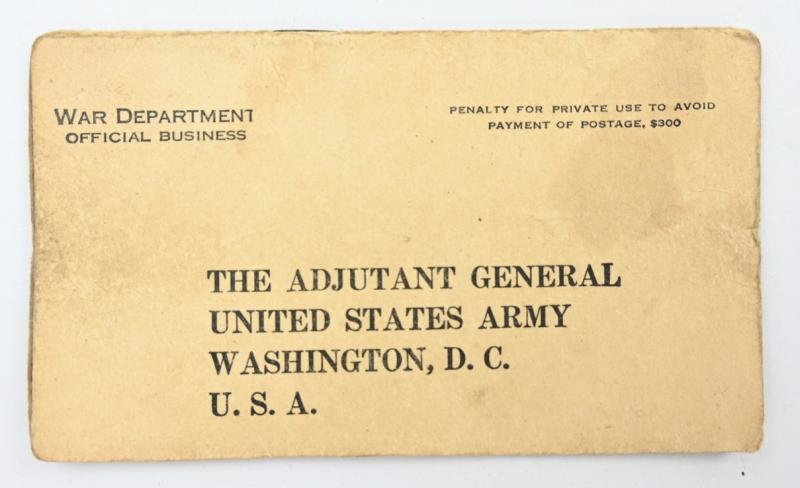US WW2 Veteran Grouping '9th Armored Engineer Combat Battalion' REMAGEN
In a very nice salty condition a US WW2 Veteran Grouping on the name of Sgt. Henry J. Juras.
Henry was attached to the 9th Armored Engineer Combat Battalion and fought his way from France to Belgium and Germany.
The 2nd Platoon of Company B was also used at the bridge of Remagen to clean the bridge from German Explosives.
The grouping contains various collar disks, ribbonbars, patches and the payment book of Henry.
Next to these items is a stunning german used Third Reich banner that has many names of Company B, 9th Armored Engineer Combat Battalion marked and also the places were the went during WW2.
A very stunning wartime relic and grouping!!
History:
Following the outbreak of World War II, the battalion was activated as the 9th Armored Engineer Battalion, part of the 9th Armored Division. Landing in France in October 1944 from their staging base in England, the 9th Armored Engineers supported the division's movement across France, making first contact with the enemy in the Schoenfels-Wilwerdange-Bissen area.
The battalion fought in the Battle of the Bulge in December 1944. In the battle, B Company operated under Combat Command B (CCB) of the 9th Armored Division and figured prominently in the Battle of St. Vith. B Company prepared three bridges for demolitions, one in Steinbruck and two in and around Galhausen. Of the 3, only one required demolition. It reinforced bridges and improved roads throughout the area and also performed counter-mobility missions such as booby trapping the woods around Galhausen and laying a minefield in the vicinity of Lierneaux. The B Company Commander was captured on 22 December 1944 when the 27th AIB CP Aid Station was overrun. The Company suffered 10 casualties during the Battle of the Bulge: five men missing in action, and five men wounded in action. The Company lost one half track, seven 2 ½ ton trucks, one ¾ ton weapons carrier, and two 2 ½ ton 4×4 trucks.
On 7 March 1945, during Operation Lumberjack, to clear the area west of the Rhine of German troops, Combat Command B of the 9th Armored Division arrived at the town of Remagen. They were surprised to discover that the Ludendorff railroad bridge over the Rhine river was intact. A three-man detachment from 2nd Platoon, B Company—Lieutenant Hugh Mott, Staff Sergeant John Reynolds, and Sergeant Eugene Dorland—accompanied the first squad of A/27th AIB to reduce the remaining explosives after the German's unsuccessful attempt to destroy the bridge. Crossing with lead elements, Dorland destroyed the main demolition switch box on the far shore. The remainder of B Company, 9th Engineers followed with the rest of A/27th AIB, finding and neutralizing more explosives on the bridge. After the crossing was initially secured, Lt. Mott led B Company in the hasty bridge repairs that allowed the first nine Sherman tanks to gingerly creep across the bridge at 2200 and begin securing the bridgehead.
The 9th Engineers were in the final sweep into Germany. It moved through Limburg from 26 to 28 March, Marburg 29–30 March, Warburg 31 March – 6 April, crossed the Unstrut River on 11 April, the Saale River 12 April, through Trebson 16–21 April. A Company moved through Goldorf, Czechoslovakia on 1 May. After the Nazi surrender, the battalion established an occupation headquarters in the Bavarian city of Bayreuth, with A Company at Coburg, B Company at Kulmbach, and C Company at Hof. Occupation duty ended in late 1945, so the battalion left West Germany and was inactivated on 13 October 1945.
Code: 74835



